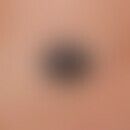Synonym(s)
HistoryThis section has been translated automatically.
DefinitionThis section has been translated automatically.
Viral disease transmitted by mosquitoes, characterized by the triad:
- fever
- exanthema
- joint, muscle and headache.
Complicated hemorrhagic courses are referred to as hemorrhagic degue fever or dengue shock syndrome.
You might also be interested in
PathogenThis section has been translated automatically.
Dengue viruses (DEN1-DEN4). Dengue viruses form a separate group in the genus Flavivirus of the Flaviviridae family, the prototype of which is the yellow fever virus. The CLDN1 protein acts as a receptor for the virus to enter the cell.
The incubation period is 4-10 days
Occurrence/EpidemiologyThis section has been translated automatically.
Endemic in tropics and subtropics (also in highly urbanized areas!) outside Europe (Southeast Asia, South Pacific, Africa, Central and South America, Caribbean).About 2-3 billion people live in endemic areas worldwide. Incidence (worldwide): Approximately 50 million infections/year, including approximately 500,000 cases of dengue hemorrhagic fever (DHF) and 20,000 deaths (primarily children). The significant global spread trend is due to the worldwide decline in vector control for decades, the increase in urban breeding sites combined with increasing littering in poor areas of the tropics, and due to increased international migration and travel.
About 2,000 cases/year are reported nationwide, especially among vacation travelers (Thailand!) or migrants.
Recently, dengue fever infections also occurred at Lake Garda/Italy (Federal Foreign Office Notices 2023).
EtiopathogenesisThis section has been translated automatically.
Infection with dengue viruses occurs from person to person through the bite of the vector (Aedes species, especially Aedes aegypti, more rarely Aedes albopictus/so-called Asian tiger mosquito); diurnal; bite mainly at dusk!)
Aedes albopictus is a small (3-4 mm), dark-colored mosquito with white stripes on the legs and a white marking on the neck shield (scutum), reminiscent of a lyre. Hence the name tiger mosquito. The proboscis is black. Females and males have the same markings, the females are usually slightly larger. Only the female mosquitoes suck blood after fertilization to cover their protein requirements for the production of offspring. The male mosquitoes feed mainly on nectar and other sweet plant juices. The females can also meet their energy requirements from this.1
ManifestationThis section has been translated automatically.
ClinicThis section has been translated automatically.
All 4 serotypes cause identical disease symptoms. Classic dengue fever begins after an incubation period of 5-8 days with high fever, severe headache, bone pain ("bone breaking fever") joint swelling.
Before the convalescent phase, a morbilliform or scarlatiniform exanthema develops; often eye involvement, lymph node swelling. Afterwards, the patient has a peculiar gait for a long time (dengue = ornamentation).
Dengue hemorrhagic fever (DHF) (see also hemorrhagic fever) has a two-phase course: dengue fever followed by a brief remission (phase 1), then sudden deterioration with bleeding in the skin and mucous membranes (phase 2).
LaboratoryThis section has been translated automatically.
DiagnosisThis section has been translated automatically.
Differential diagnosisThis section has been translated automatically.
Complication(s)(associated diseasesThis section has been translated automatically.
TherapyThis section has been translated automatically.
Symptomatic, according to WHO guidelines. Cave! Aspirin in hemorrhagic diathesis should be avoided.
Monitoring of vital functions, sufficient fluid intake, in case of disseminated coagulopathy possibly heparin therapy.
Skin changes symptomatic with cooling lotions.
Haemorrhagic forms require immediate intensive medical treatment.
Progression/forecastThis section has been translated automatically.
ProphylaxisThis section has been translated automatically.
Exposure prophylaxis (unlike malaria, also during the day) with repellents (DEET, Bayrepel), as well as with permethrin-impregnated mosquito nets at night. A vaccine is not yet available. A tetravalent live vaccine (CYD-TDV) is currently being tested.
Note(s)This section has been translated automatically.
Please note! Mandatory reporting in case of pathogen detection or a hemorrhagic course of the disease in case of suspicion/illness/death!
LiteratureThis section has been translated automatically.
- Aviles G et al (2003) Complete coding sequences of dengue-1 viruses from Paraguay and Argentina. Virus Res 98: 75-82
- Hlastead SB, Deen JL (2002) The future if dendue vaccine. Lancet 360: 1100-1101
- de Oliveira Poersch C et al (2005) Dengue virus infections: comparison of methods for diagnosing the acute disease. J Clin Virol 32: 272-277.
- DeRoeck D et al (2003) Policymakers' views on dengue fever/dengue haemorrhagic fever and the need for dengue vaccines in four southeast Asian countries. Vaccine 22: 121-129
- Kay B, Vu SN (2005) New strategy against Aedes aegypti in Vietnam. Lancet. 365: 613-617
- Pastor Bandeira I et al (2021) Diffuse skin rash in tropical areas: dengue fever or COVID-19? An Bras Dermatol 96:85-87.
- Rush B (1789) An account of the bilious remitting fever, as it appeared in Philadelphia in the summer and autumn in the year 1780. In: Rush B (ed) Medical inquiries and observations. Pritchard & Hall, Philadelphia, pp. 89-100.
- Sideridis K et al (2003) Dengue fever: diagnostic importance of a camelback fever pattern. Heart Lung 32: 414-418
- Wichmann O et al (2005) Dengue antibody prevalence in German travelers. Emerg Infect Dis 11: 762-765
Incoming links (17)
Chikungunya; Classification of viruses; CLDN1 Gene; Dandy fever; Flaviviridae; Hepatitis c virus; Occupational diseases ; O'nyong-nyong; Oropouche fever; Pappataci fever; ... Show allDisclaimer
Please ask your physician for a reliable diagnosis. This website is only meant as a reference.






